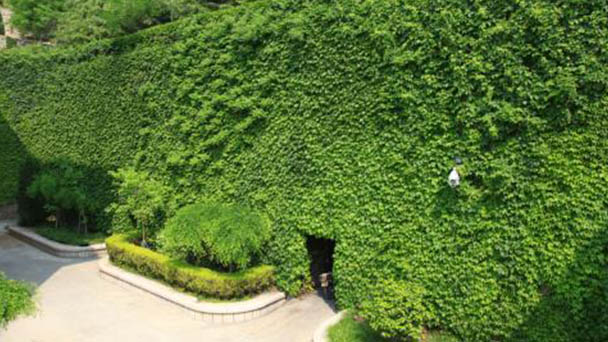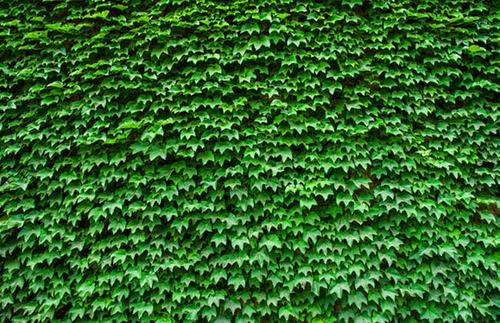How to Grow and Care for Boston Ivy
Written by Maggie
Jan 28 2023

Boston Ivy is a plant of the genus Caulis in the grape family and usually climbs on walls. Although Boston Ivy has strong adaptability, cold resistance and drought resistance, it still needs to pay attention to temperature control. Today, we will talk about how to grow and care for Boston Ivy.
1. Soil care for growing Boston Ivy
Boston Ivy is a plant with strong adaptability. When we grow and care for Boston Ivy, it can grow in both sunny and dry places, but it is most suitable for the soil conditions of Boston Ivy, or the places where the soil is cold and wet.
2. Growing Time
The best time to plant Boston Ivy is in the spring or summer, when all the plants are growing well.
3. Temperature Care
Boston Ivy is a hardy plant and thrives when planted in drier locations. Therefore, when we grow and care for Boston Ivy, it is more suitable to cultivate Boston Ivy at a temperature above 20 degrees. In winter or autumn, Boston Ivy can also be kept in an evergreen state.
4. Light Care
Boston Ivy is a plant with strong adaptability. When placed in a place with strong light or cold all the year round, Boston Ivy can thrive. Therefore, when we grow and care for Boston Ivy, the light requirements for Boston Ivy cultivation are not high.

5. Pruning Care
After the cultivation of Boston Ivy, it is necessary to trim the leaves of Boston Ivy, because the branches and leaves of Boston Ivy are relatively lush. Friends with a certain aesthetic sense can prune the Boston Ivy growing in their own homes to be more beautiful and ornamental.
6. Fertilization Care
Fertilizing Boston Ivy can be done once or twice a day. Fertilizing Boston Ivy during her growing season will encourage her growth. When we grow and care for Boston Ivy, don't let the surrounding weeds grow taller than Boston Ivy, otherwise it may make the Boston Ivy sunlight blocked by the weeds.
7. Boston Ivy Pest Control
When Boston Ivy was cultivated, she would also get some diseases peculiar to plants, such as powdery mildew and leaf spot, which would limit her growth. Although Boston Ivy is a resilient plant, it will suffer less pest disease, but that does not mean it will not get it. When we grow and care for Boston Ivy, after finding Boston Ivy sick, fertilizer should be applied and some pesticides such as chlorothalonil should be used to rid Boston Ivy of the disease. After paying attention to the above details, cultivating Boston Ivy will certainly become easier.
- Read More: Is Boston Ivy Poisonous
8. Boston Ivy Propagation
Seed Propagation
Seed Selection
Boston Ivy has many methods of propagation, but let's start with seed reproduction.
Every fall, when the Boston Ivy fruits are ripe, they can be picked when the color changes from green to purple. After washing and drying, the seeds are disinfected and stored in the wet sand.
Wait until the next spring, in March can be taken out to soak in warm water for two days, dry with two parts of sand to one part of the seed ratio, and then placed in a sunny but poorly ventilated environment, often sprinkled on the surface of the sand, about 20 days can be sowing.
Sow
The prepared soil is softened and evenly put into the container. The water should be watered to ensure sufficient moisture, and the mixed seed sand should be scattered together. The difference with other plants is to cover the seed sand with a layer of putrid soil, and then make a plastic film shed to promote germination.
Cuttage Propagation Method
The best time to choose the branches is in summer. For the branches that are neither very tender nor very old, the length of the cutting should be at least 10 centimeters or more, but not too long.Instead of picking the top part of the branch, you pick the middle part, so cut the top end crosswise and the bottom end diagonally.
Soak the branches in root powder for less than an hour before putting them into the ground.After cutting, water supply and top dressing management should be done well.

Latest Updated
- Benefits of Bugleweed - 7 Science-backed Health Benefits
- Bugleweed Dangers & Side Effects - Is It Poisonous?
- How to Plant Evergreen Trees - What You Should Know
- When to Plant Evergreens - Grow Guide for Evergreen Trees
- 12 Wonderful Evergreen Shrubs for Your Garden
- 12 Popular Evergreen Plants with Pictures for Beginners
- When And How To Prune A Lilac Bush Like a Pro
- How to Grow & Care for Lilac Vine (Hardenbergia Violacea)
- Japanese Lilac Tree (Syringa Reticulata) Care & Propagation Guide
- Shumard Oak Pros and Cons - What to Know
Popular Articles
- Winter maintenance of Antirrhinum Majus
- How to Grow Terminalia Mantaly Tree
- How to Grow and Care for Crossostephium Chinense
- How to grow Antirrhinum Majus in spring
- Peristeria Elata (Dove Orchid) Profile: Info & Care Guide
- Underwatered Snake Plant (Sansevieria Trifasciata) - Signs And How To Fix
- How to Care for Brazilian Jasmine Plant (Mandevilla Sanderi)
- How to Grow & Care for Graptopetalum Purple Delight in Summer
- Rosa Chinensis (China Rose): Plant Growing & Care Tips
- How to Care for Baby Sun Rose (Aptenia Cordifolia)